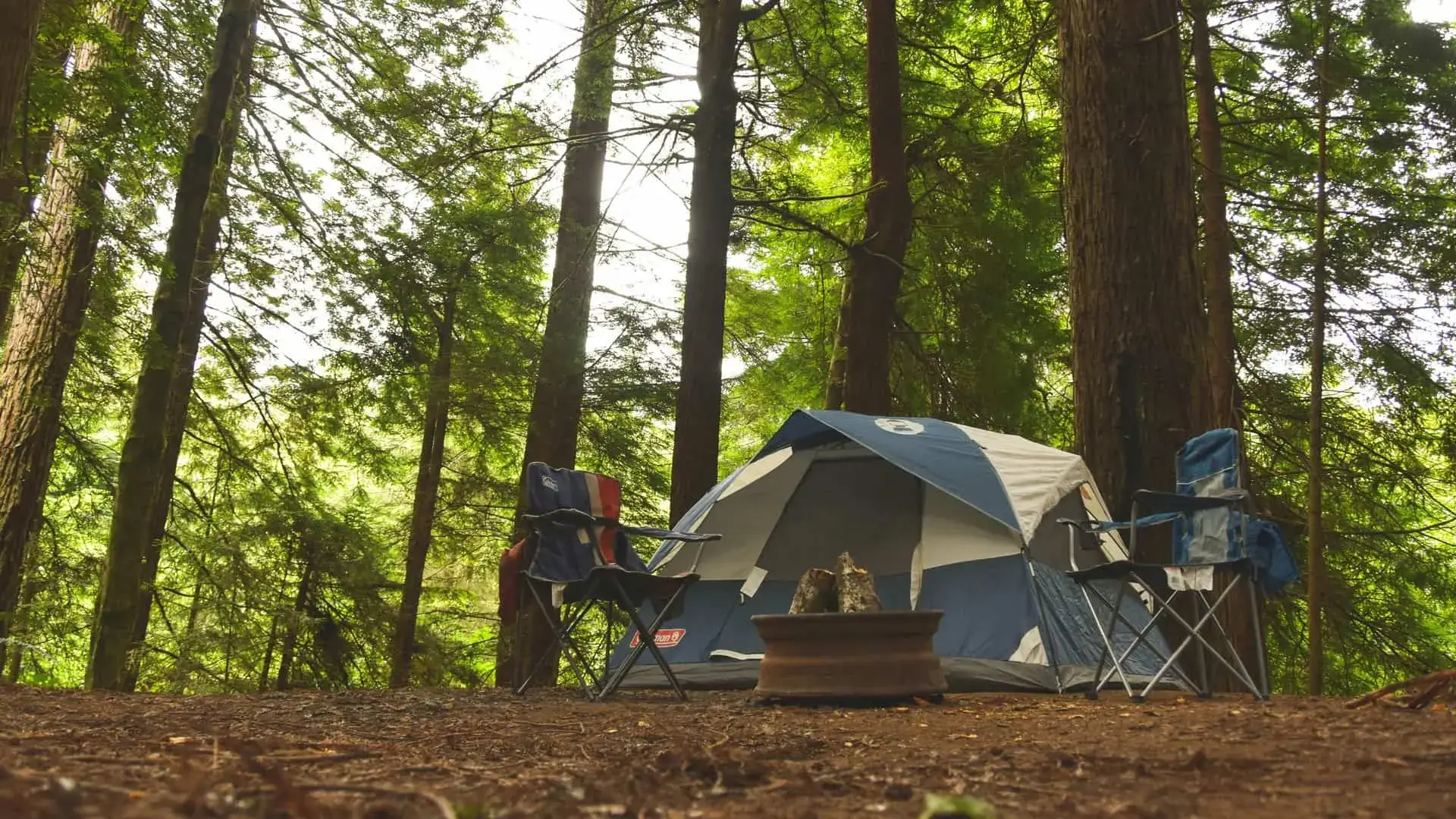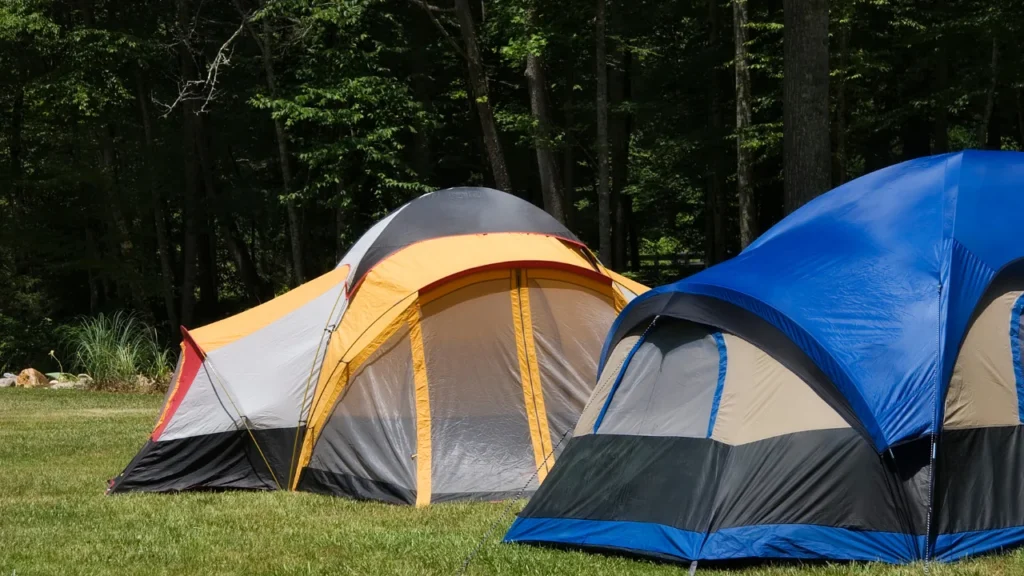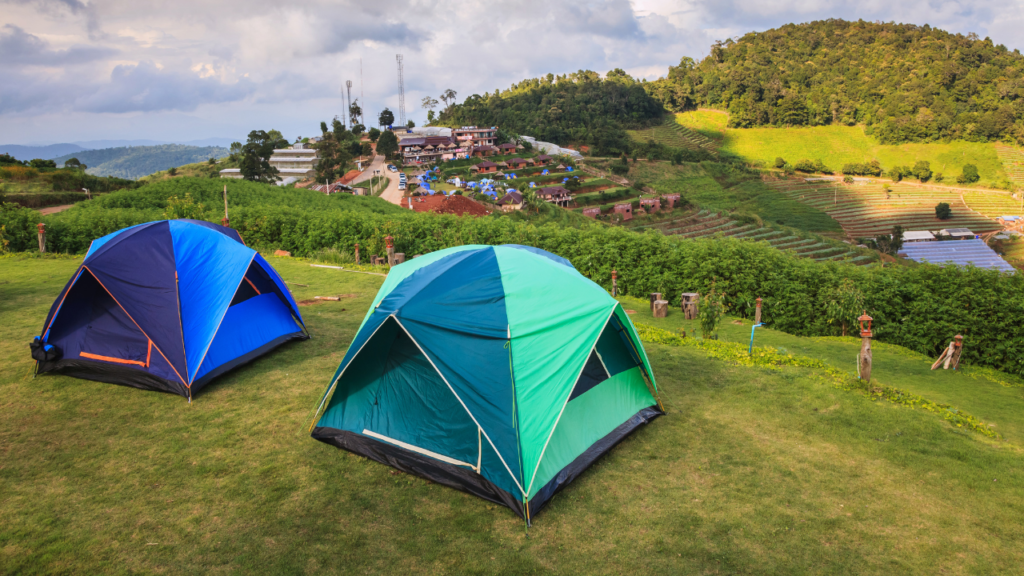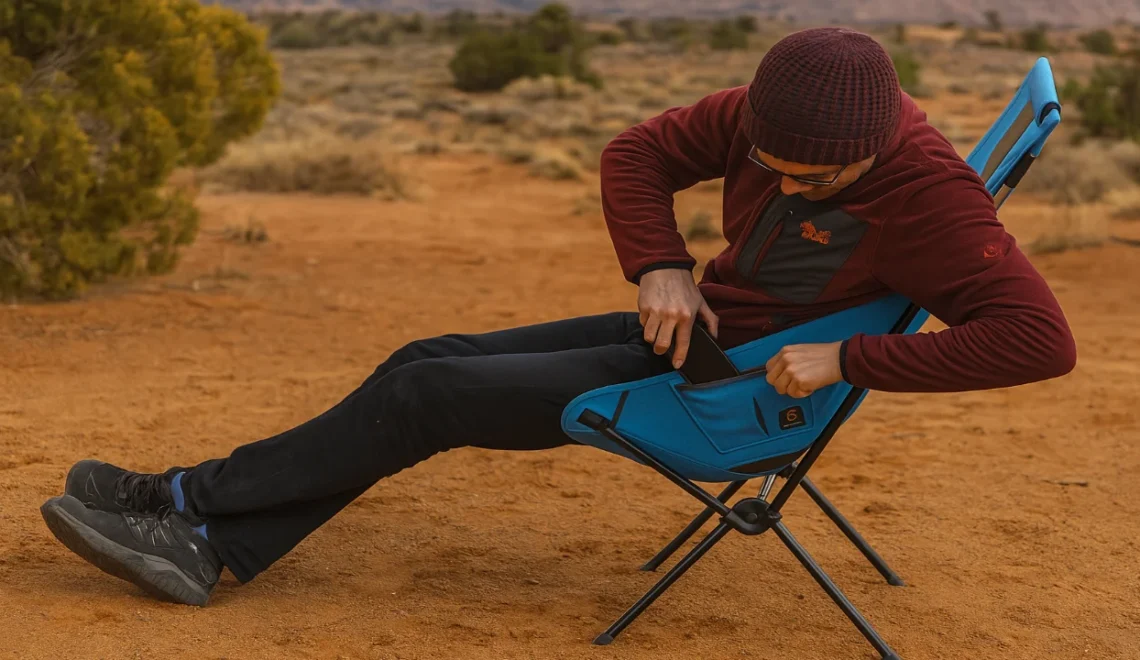
Perfect Camping Tent Size Guide – Must-Know Tips
Having spent countless nights under the stars, I’ve learned that choosing the right tent isn’t just about counting sleeping spots. While standard camping tents label their sizes by person measurement, the reality often differs from marketing claims. A 2-person tent might technically fit two bodies, but your adventure requires more than just a tight squeeze. My years of guiding first-time campers through their purchase decisions have taught me that true comfort comes from understanding how space works in practice.
From backpacking tents to luxurious canvas bell tents, each style offers unique advantages for different individuals. A 3-person tent typically provides enough room for two people plus their gear storage, allowing proper living space to move around. The spacious interior and extra height of canvas tents make them ideal for longer stays, especially when bringing dogs or extra bags. Whether you’re a beginner, intermediate, or expert, consider both your sleep space and the square footage needed for your rucksack and equipment. The number of berths (or number of people) listed on the size guide merely suggests maximum occupancy, not optimal shapes for comfortable camping.
Make sure the tent you’re considering meets your demands. This covers a variety of information, such as the number of campers, typical weather, and seasons.
However, how much room is necessary in a tent? The most popular approach is based on capacity. But square footage is another option as well. We’ll discuss both approaches in this piece.
Table of Contents
ToggleCamping Tent Sizes for Standard and Canvas Tents
As someone who’s spent years testing various shelters, I can tell you that the manufacturers’ approach to tent size listing often leaves campers confused. While most brands stretch their capacity claims, my experience with Life inTents revealed a refreshing commitment to realistic representation. Their camping tent size guide actually considers how people camp in real life, not just how many bodies can squeeze into a space.
When comparing standard tent sizes with canvas tents, especially bell tents, you’ll notice a significant difference in livability. Traditional manufacturers might claim a tent fits a certain number of people for sleeping, but they rarely account for gear and storage needs. Through countless camping trips, I’ve found that the best shelters allow for both living and resting comfortably. This practical approach to sizing ensures you won’t feel cramped when waiting out a rainstorm or organizing your equipment.
What Size Do Tents Come In?
After a decade of outdoor retail experience, I’ve seen firsthand how the tent industry has evolved to meet diverse camping preferences. The market today offers an impressive array of common tent sizes in various shapes, ensuring there’s always something that perfectly fits your specific needs. From ultralight backpacking shelters to family-sized mansions, these sizes range dramatically, making it easier than ever to find your ideal outdoor home. During my years guiding customers through purchases, I’ve noticed that understanding these options often makes the difference between a good camping experience and a great one.
One-Person Tent
When it comes to one-person tents, these nimble shelters have become the go-to choice for solo adventurers seeking lightweight protection in the wilderness. Drawing from countless testing experiences during thru-hiking journeys, here’s what makes them stand out:
- One-person tents serve as ideal shelters for solo adventurers, proven through extensive testing during thru-hiking experiences. They’re specifically crafted for individual campers, backpackers, and hikers who need efficient, lightweight shelter solutions.
- These compact shelters typically provide between 15 to 20 square feet of floor space, with the widest section measuring between 35 to 40 inches. This efficient sizing ensures adequate space while maintaining portability.
- A key feature is the low profile design, which includes a vestibule for storing gear like rucksacks or backpacks. This thoughtful design element keeps equipment protected from the elements while preserving valuable interior sleeping space.
- The effectiveness of one-person tents has been proven in challenging conditions, such as during Pacific Crest Trail expeditions, where minimizing weight and space while maintaining functionality is crucial.
Also Read about How to Choose the Best 1 Person Backpacking Tent
2 Person Tents
A two-person tent represents a versatile investment for outdoor enthusiasts, balancing comfort and portability for both solo and paired adventures. Based on years of hands-on testing and guiding experience, here’s what you need to know:
- Canvas tents offer exceptional spacious living areas, typically 8.5 x 6 feet with up to 51 square feet of floor area, making them ideal for extended stays compared to standard dome-style tents that measure 7.5 x 4 feet.
- Premium manufacturers like Kodiak, Springbar, and Flexbar design cabin tents that are durable and transportable, perfect for hunters and serious campers who need reliable shelter at their campsite.
- While these tents can accommodate a camp pad or mattress, they’re too tight for a cot. However, they provide enough space to comfortably store your rucksack or backpack while maintaining adequate sleeping room.
- For adult users, these shelters represent the largest portable options you can reasonably walk with, offering luxurious features not found in basic brands like LIT.
The Versatile Three-Person tent: A Family Adventure Essential
When it comes to three-person shelters, these versatile accommodations strike an ideal balance between spaciousness and portability, making them a top choice for small families and groups. From my extensive experience guiding outdoor adventures, here’s what makes them stand out:
- The generous floor area of 40 to 45 square feet provides ample internal space for moving around, making it an excellent choice for various camping scenarios.
- As a backpacking tent, it’s efficiently manageable when the load is shared – typically with one person having carried the main tent while their partner handles the poles and accessories.
- The layout comfortably accommodates two people plus a child or dog, with enough room for gear storage, making it the best option for small family adventures.
- Unlike smaller shelters, this size allows you to comfortably spread out your camping essentials without feeling cramped, though it still maintains reasonable portability for backcountry travel.

Four-Person Tent
Through my years of camping experience, I’ve found that tent capacities can be misleading without considering real-world usage. Let me break down how tent sizes actually work in practice.
- A 4-person tent in the standard model measures 8 feet by 7 feet with about 70 square feet maximum, making it ideal for 2-3 people rather than four
- The canvas tent version like the Scout is more spacious at 11 feet by 9 feet, offering 99 square feet with vertical walls in an A-frame style
- These family tents work best when you need extra room to walk around and handle gear storage
- While it’s technically designed for four adults with sleeping bags, I’ve found it’s more comfortable for three adult campers with a small child or dog
- The cabin-style tent design provides better livability despite being the smallest size in the family tent category
- The floor area ranges from 60 square feet to 70 square feet, offering a snug fit for families
Five-Person Tent
A 5-person tent comfortably accommodates 4 people with ample headroom and floor space, making it an ideal choice for small families or groups seeking a balance of comfort and practicality.
- The spacious floor area ranges from 75 square feet to 80 square feet, providing plenty of room for gear and sleeping arrangements
- With head height between 6 feet and 7 feet, tall adults can easily stand inside
- While marketed for five people, these tents more realistically fits four people comfortably
- The inside space feels less tight when used by fewer occupants, particularly for extended trips
- This size tent offers a perfect middle ground for person/people seeking a balance between portability and space

Six-Person Tent
The 6-person tent, available in both standard and canvas varieties, offers versatile space solutions ranging from 90 to 133 square feet, making it the most popular choice for families seeking comfort without excessive bulk.
- The standard 6-person tent measures 10 x 9 feet, providing 100 square feet of floor area ideal for four adults with gear and backpacks
- Perfect for families: accommodates two adults and two kids with spacious room to spare
- While rated for six campers, fitting five people can feel cramped, making it better suited for smaller families
- Canvas bell tent options like Stella by Life inTents offer luxury with a 13-foot diameter (4 meter) and 133 square feet
- Premium models can fit two full beds or 3-4 cots, though those who rough it in sleeping bags will find the average 90 square feet provides a tight fit
- This common size ensures adequate space for typical camping needs while maintaining practicality
Eight-Person Tent
The 8-person tent exists in two distinct variants – a standard and canvas model – offering generous space from 120 to 212 square feet, making it ideal for larger families or groups seeking comfortable accommodation in the wilderness.
- The standard 8-person tent offers king-size living space measuring 15 x 9 feet with 130 square feet of floor space
- Ideally suits four people with gear, though can accommodate six people if some are children or dogs
- Requires careful spot selection with adequate distance from the fire for safety
- Premium canvas bell tent options by LIT (Stella and Fernweh) feature a 16-foot diameter (5 meters) with 212 square feet of space
- Comfortable living space includes room for eight people in sleeping bags or a queen bed with two cots
- Perfect for family camping with little ones, offering plenty of space in both 120 square feet to 130 square feet configurations
- These spacious shelters provide ample living space for an enhanced camping experience
Ten-Person Tent
The 10-person tent represents the pinnacle of camping accommodation, offering between 150 to 289 square feet of space across its standard and canvas variants, making it ideal for groups seeking generous living space without compromising comfort.
- Among the largest tent sizes, the standard 10-person tent provides 180 square feet of floor area (14 x 10 feet)
- Comfortably fits four adults with gear and room to roam; can fit pretty comfortably with six adults
- Trying to fit eight people makes it feel like a pack of sardines
- The canvas tent version boasts a 5 feet diameter (6 meters) with massive 289 square feet of ample interior space
- Can accommodate two queen-size beds or four to five cots along the outer edges with room to walk around
- Perfect for 4-6 people, though rated for 10 people in sleeping bags
- Ensure campground campsites can accommodate these larger sizes
- Starting at 150 square feet, these tents ensure a comfortable experience without feeling cramped
12-Person Tents
Dreaming of creating unforgettable outdoor memories with your loved ones? Let me share my experience with massive group tents that have revolutionized family camping.
- The mighty 12-person tent transforms from a simple tent into a spacious beauty, offering cabin styles and canvas options like the Stella, Fernweh, and Timberline Exchange. These giants provide a whopping 200 square feet to 289 square feet of living space, with standing height clearance and room dividers for privacy.
- During my last family camping getaway, I witnessed firsthand how these shelters, particularly the bell tent style measuring 18 feet by 10 foot or featuring a 5 feet diameter with a 6 meter height, opens up wide to create the perfect space. Paying attention to comfort, they can accommodate various sleeping configurations – from three queen-size air mattresses to two king-size beds or multiple sleeping bags.
- While marketed for 12 people, on the flip side, I’ve found these spacious havens work best for 6 people if you want true luxury. They’re ideal for family, children, and couples looking to sleep together during a cozy slumber party. The standard features include swinging doors that make these shelters perfect for everything from a couple’s retreat to an extended family gathering
Smart Sizing: Essential Tips for Your Perfect Tent Match
As an avid camping enthusiast who’s tested countless tent options, I’ve learned that size selection deserves careful consideration. From my experience leading group adventures, the key is to consider both your physical comfort and spatial needs. The height of your shelter is crucial – while dome-style tents might force you to kneel or sit, a cabin-style tent with at least 60 inches of clearance or a canvas tents boasting an 8′ 3″ ceiling at the center pole provides ample standing room for those with sensitive back and knees.
After countless trips to various campsites, I’ve learned to research thoroughly before you arrive. Whether you’re eyeing a 3-person, 5-person, 7-person, 8-person, 9-person, or 12-person option, ensure you have enough square footage and wiggle room for your planned activities. Life inTents offers a handy tent selector guide to help match your needs with the perfect shelter. However, when in doubt, upsize – while standard sizes are often listed by even number of people, you might require extra space for comfortable living. Don’t hesitate to reach out and check out their guide with any questions – they’ll help you find the answer accordingly.
Smart Space Planning: Finding Your Perfect Tent Fit
After years of leading wilderness expeditions, I’ve learned that choosing a tent is never a “one size fits all” situation. From my experience, you should first figure out exactly what type of camping you’ll be doing – backpacking requires different considerations than car camping. Here’s a pro tip: when planning for adults, kids, and even dogs, remember that the average camper needs 14 square feet of floor space.
Let’s break down the math: for a group of 4 campers, a shelter with 70 square feet (roughly 17.5 square feet per sleeper) is ideally what you’ll want to accommodate everyone comfortably. The floor plan and floor dimension should be wide enough for sleeping bags, pads, and storing essential gear and clothing. Whereas manufacturer’s sizes might suggest tighter fits, I’ve found it’s worth paying extra attention to personal space and elbow room. Review all available options to pick the best size – a larger room often makes for a better experience. You can also figure out the total square footage needed by considering these factors along with the height requirements of your tallest member.
Conclusion
For outdoor experience, choose the appropriate size for your camping tent. The number of people camping, the kind of camping you’re doing, how much stuff you need to keep, and the predicted weather all affect how big of a tent should be. A one- or two-person tent offers the ideal blend of weight and capacity for lone campers.
A 2- to 4-person tent may be perfect for couples or small parties as it provides extra space for sleeping and stowing goods. Tents intended for 5-8 people or more are the best choice for families and big gatherings. It ensures ample space and often features many rooms for privacy and organization




There is obviously a lot to know about this. I believe you made some nice points in features also.
You actually make it appear really easy with your presentation but I find this matter to be actually one thing that I think I’d never understand. It kind of feels too complicated and extremely vast for me. I am having a look forward on your subsequent submit, I’ll try to get the cling of it!
I like this site its a master peace ! Glad I found this on google .
Yay google is my king aided me to find this great internet site! .